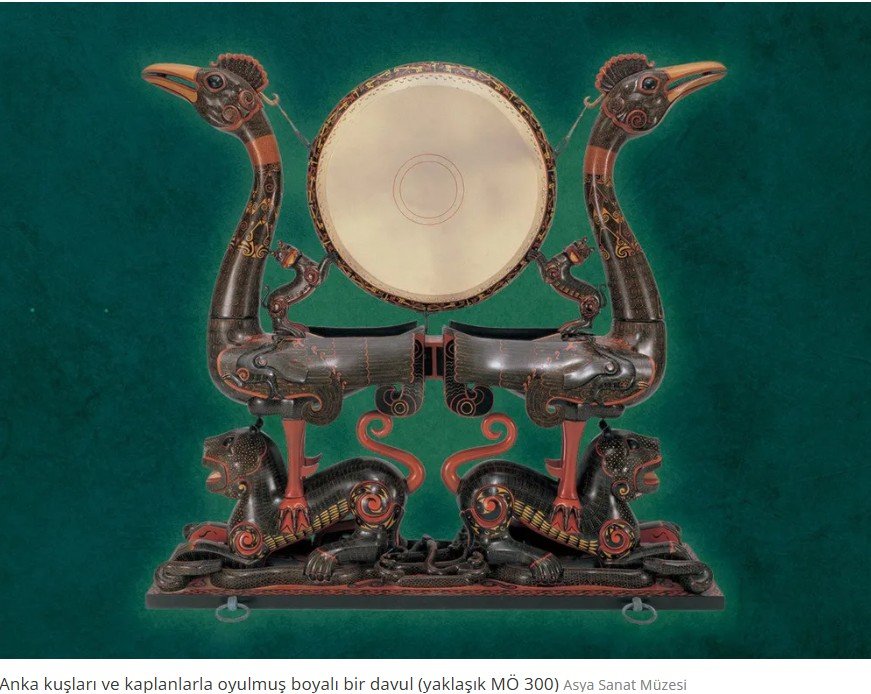March 27, 2025
By Sonja Anderson | Translated by Aynılhayat Oğuz
A new exhibition sheds light on the mythological worlds of China’s “lost” Bronze Age kingdoms—where dragons, phoenixes, and tigers ruled both art and imagination.
Chinese history is famously rich in mythological imagery—dragons, phoenixes, and tigers feature prominently across centuries of artwork. But where do these iconic symbols come from? A new exhibition in San Francisco offers powerful insights into their origins, bridging gaps in a fragmented historical narrative and immersing visitors in 3,000 years of Chinese artistic expression.
Hosted at the Asian Art Museum this spring, Phoenix Kingdoms: The Last Splendor of China’s Bronze Age brings together more than 150 extraordinary artifacts from the end of China’s Bronze Age. According to the museum, the works originate from ancient cultures that thrived along the Yangtze River—considered the cradle of Chinese civilization—over three millennia ago.
Dr. Jay Xu, the museum’s CEO and a renowned scholar of early Chinese history, told China Daily:
“We are living in the golden age of Chinese archaeology. Phoenix Kingdoms helps bridge myth and history, offering an encounter with the past through truly remarkable artworks.”
Art from a Forgotten Era
This “golden age” of archaeology is shedding new light on a pivotal period in Chinese history: the Zhou dynasty, which lasted from around 1050 BCE until 221 BCE, when Emperor Qin Shi Huang unified China and launched the brief but transformative Qin dynasty—known for constructing the first Great Wall and the famed Terracotta Army.
As Dr. Xu explains, history has long focused on the Qin conquest itself, detailing which kingdoms were defeated—but has largely overlooked the artistic and spiritual legacy of those conquered states:
“The records have always had glaring gaps. We knew who Qin defeated—historians loved to list them—but we lacked the artistic evidence that connected the beliefs of those earlier kingdoms to the symbols that persisted through later dynasties. Ever wondered why Chinese art is so full of phoenixes, tigers, and snake-like dragons? Where did the styles we now associate with ‘Chinese-ness’ really come from?”
The Lost Kingdoms of Zeng and Chu
The exhibition focuses on two such “lost” kingdoms from the Zhou era: Zeng and Chu, both located in what is now southern China. These civilizations flourished between roughly 1040–400 BCE (Zeng) and 1030–223 BCE (Chu), and were dominant cultural forces before the Qin dynasty’s rise. But as Qin expanded, it sought to erase the memory of its rivals—executing scholars, burning books, and suppressing regional traditions.
Phoenix Kingdoms, the first exhibition of its kind in the United States, features rare treasures from five major Chinese museums specializing in Bronze Age archaeology. As reported by Artnet’s Tim Brinkhof, the artifacts—excavated from aristocratic tombs—include jade objects, ritual bronze vessels, musical instruments, lacquerware, weapons, and funerary goods made from wood and bronze.
Many of these objects feature symbolic creatures central to Chinese mythology:
- Snake-like dragons, guardians of water and cosmic power
- Tigers, symbols of courage and imperial authority
- Phoenixes, mythical birds representing harmony and renewal
Highlights from the Exhibition
Among the most captivating works is a 4,200-year-old jade carving depicting two predatory birds, believed to have adorned a ritual mask. This piece reveals early themes of “spiritual guides, winged protectors, and ceremonial face coverings”—motifs that would influence Chinese art for over a thousand years.
Another highlight is a 2,300-year-old painted drum, which shows phoenixes standing atop tigers’ backs—a striking visual metaphor for the harmony between power and grace. According to the museum, such artworks directly influenced the aesthetic and symbolic traditions of the later Qin and Han dynasties.
Bridging Myth and History
Curator Fan J. Zhang emphasizes that many of the exhibition’s dazzling works are considered national treasures, not only for their beauty but for their cultural significance:
“These pieces serve as missing links between mythology and written history. They are rare, elegant, and profoundly meaningful.”
Phoenix Kingdoms invites audiences to reimagine the origins of Chinese art—not as static tradition, but as a living legacy forged in ritual, mythology, and resilience.
Note: Translated and adapted from an article originally published on Smithsonianmag.com.
Abroad Africa AI Beijing Belt & Road BLCU BRICS China chinese CPC CSC Culture Economy education Iraq Korea Kültür Langauge movie Russia scholarship science Shanghai Sino Sino Turkish Sino Turkish Sino Turkish Sino Turkish Sino Turkish Studies Sino Turkish Studies Sino Turkish Studies Sino Turkish Studies space Syria Taiwan Tariff trump Turkiye Türkiye University USA Xi Jinping Xinjiang ZJUT Çin





